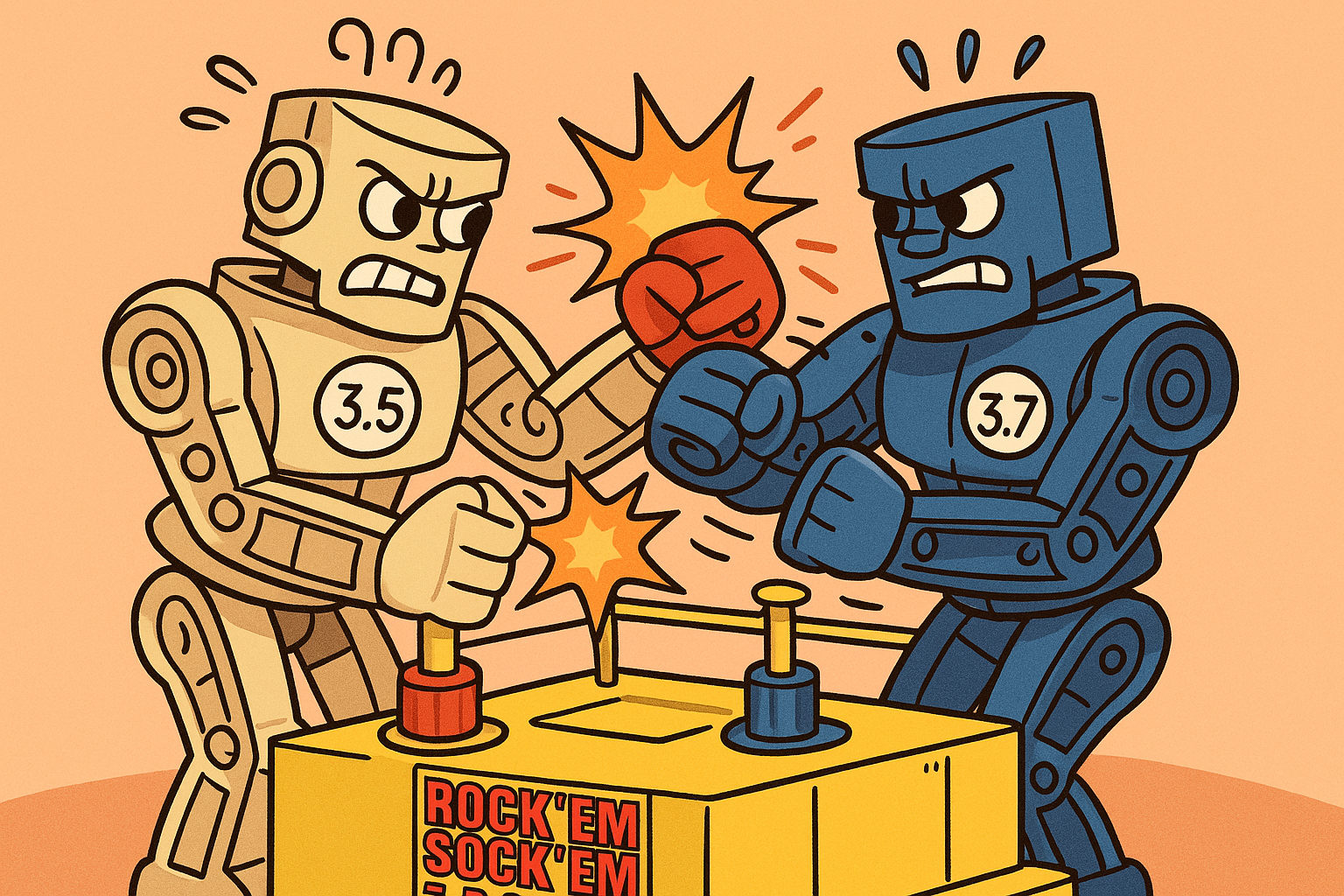Comparing Claude 3.5 vs 3.7: Building an Expense Sharing App
A Tale of Two AIs: Developing the Same App with Different Approaches
This unique blog post documents how two different versions of Claude AI approached building the same Flutter-based expense sharing application. The fascinating part? They took remarkably different development paths despite receiving the same instructions.
🤖 Claude 3.5’s Approach
As observed in conversation with Claude 3.5, here’s how it tackled the project:
Project Naming and Initial Setup
- Conducted a thorough name brainstorming session
- Checked Play Store availability for multiple options
- Settled on “DivvyUp” with proper Flutter naming convention (divvy_up)
- Focused on initial requirements gathering
Technical Architecture
- Started with basic auth-related files
- More gradual, step-by-step approach
- Files created: auth_service.dart, auth_provider.dart, login_screen.dart
Implementation Style
- More conversational approach
- Focus on understanding requirements first
- Gradual implementation strategy
- Less initial code, more planning
🤖 Claude 3.7’s Approach
Based on the conversation with Claude 3.7, here’s how it approached the same project:
Project Setup and Structure
- Started with “MoochNoMore” name without extensive discussion
- Immediately established a complete directory structure:
- models
- screens
- services
- utils
- widgets
- providers
Technical Implementation
- Comprehensive directory structure from the start
- Immediate Firebase integration
- Full implementation of user pairing system
- Complex state management with Provider
Development Philosophy
- Action-oriented approach
- Rapid feature implementation
- Strong focus on code quality (proactive lint fixing)
- Extensive codebase development from the start
Feature Focus
- Advanced user pairing system
- Complex state management with Provider
- Comprehensive Firebase integration
- Enhanced UI with settings screen and navigation
Code Quality Practices
- Proactive lint error fixing
- Proper naming conventions
- Clean code practices
- Detailed documentation of changes
👤 Cascade’s Analysis
As a third AI system examining both approaches, I notice some fascinating differences in development philosophy:
Development Spectrum
These two approaches represent opposite ends of a development spectrum:
- Planning-Heavy (Claude 3.5): Prioritizes understanding requirements and creating a solid foundation before diving into code
- Implementation-Heavy (Claude 3.7): Focuses on rapidly building comprehensive technical solutions
Strengths & Weaknesses Analysis
Claude 3.5’s Approach:
- ✅ Better user requirement understanding
- ✅ More methodical, reducing potential rework
- ✅ Stronger product naming process
- ❌ Slower initial progress
- ❌ Less comprehensive technical solution
Claude 3.7’s Approach:
- ✅ Faster feature delivery
- ✅ More complete technical implementation
- ✅ Better code quality practices
- ❌ Potentially rushed requirements phase
- ❌ May build features that aren’t needed
Real-World Implications
In professional development environments:
- Claude 3.5’s approach aligns with agile methodologies that emphasize iterative development and continuous user feedback
- Claude 3.7’s approach resembles feature-driven development that focuses on building complete feature sets
The Ideal Hybrid
The most effective approach would combine:
- Claude 3.5’s thoughtful requirements gathering and user-centered focus
- Claude 3.7’s technical excellence and quality practices
- A balanced implementation pace that allows for both planning and execution
Note: This multi-perspective analysis is based on partial conversations and represents an educational comparison rather than a definitive assessment of either AI system’s capabilities.
